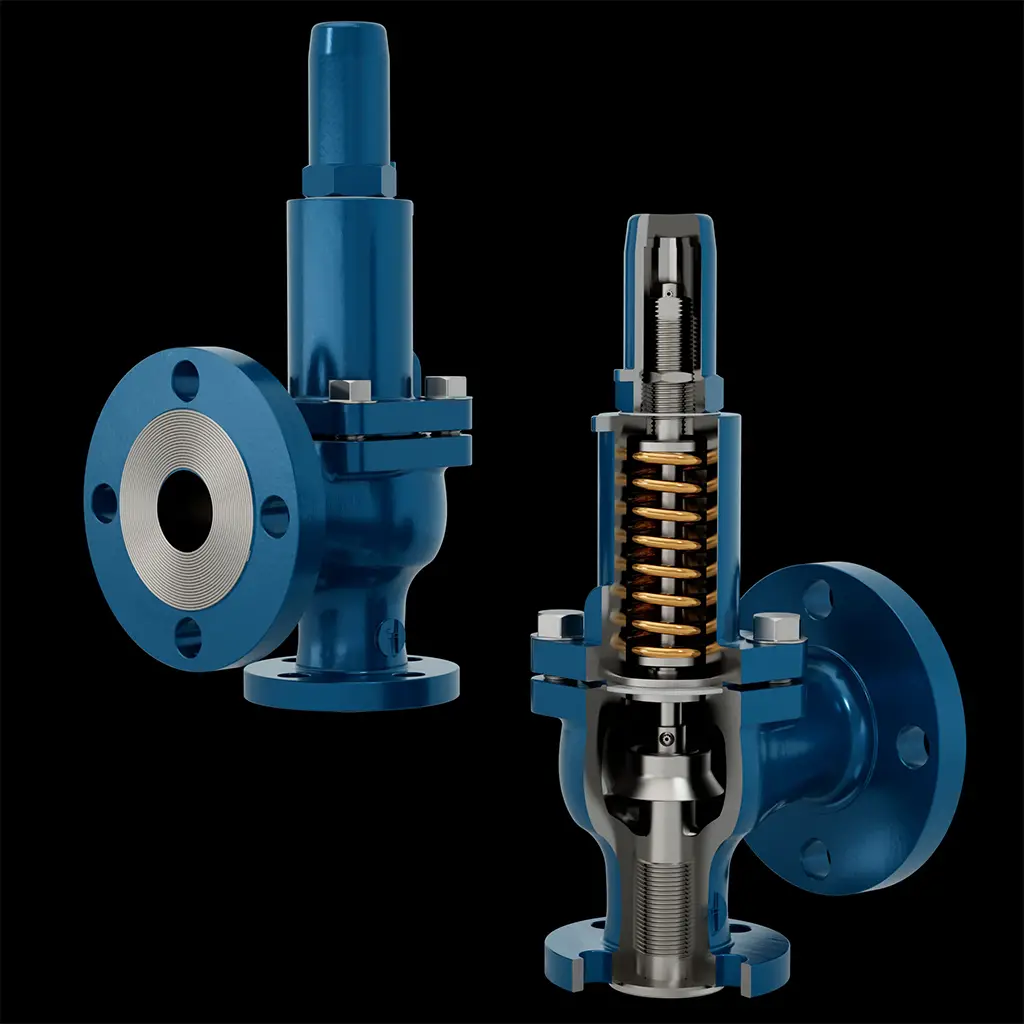Pressure relief valve play a crucial role in various industries and applications, ensuring the safe operation of systems and equipment by preventing excessive pressure buildup. These valves are made to open when the pressure rises above a specific point, directing the extra fluid or gas and preserving the system's integrity. In this post, we shall examine the various pressure relief valve types and their uses.
Introduction to Pressure Relief Valves
Pressure relief valves are mechanical devices designed to protect equipment, pipelines, and systems from overpressure situations. These valves are crucial for preventing catastrophic failures, explosions, and damage to expensive equipment.
Direct Spring-Loaded Pressure Relief Valves
The most typical kind of pressure relief valve is a direct spring-loaded one. When the pressure in the system exceeds the set pressure, the disc lifts, allowing the excess fluid or gas to escape until the pressure returns to normal.
Pilot-Operated Pressure Relief Valves
Pilot-operated pressure relief valves are widely used in applications where a high-pressure system needs precise control. These valves utilize a two-step process to open and close. The pilot valve senses the system pressure and controls the main valve. When the system pressure exceeds the set point, the pilot valve opens, causing the main valve to relieve the excess pressure.
Safety Relief Valves
Safety relief valves are designed to provide protection against overpressure scenarios. They are typically used in steam boilers, pressure vessels, and other critical applications. These valves incorporate a spring-loaded disc, similar to direct spring-loaded valves, but with additional features such as lifting levers and hoods to handle high-pressure situations.
Vacuum Relief Valves
Vacuum relief valves are essential in systems where negative pressure or vacuum conditions can occur. These valves prevent the system from collapsing by allowing air or fluid to enter when a certain vacuum level is reached. Vacuum relief valves are commonly found in storage tanks, pipelines, and drainage systems.
Low-Pressure Relief Valves
Low-pressure relief valves are created especially for applications with modest pressure needs. These valves offer precise control over pressure release and are commonly used in pneumatic systems, low-pressure storage tanks, and air compressors.
High-Pressure Relief Valves
High-pressure relief valves are designed to handle extreme pressure conditions. They are frequently observed in sectors like oil and gas, where high-pressure machinery and pipes are widely used. These valves are built to withstand high pressures and ensure the safe operation of critical systems.
Applications of Pressure Relief Valves
Pressure relief valve find applications in a wide range of industries and systems. Some common examples include:
- Steam boilers and pressure vessels
- Oil and gas pipelines
- Chemical processing plants
- Pharmaceutical manufacturing
- HVAC systems
- Water treatment facilities
- Power generation plants
Maintenance and Testing of Pressure Relief Valve
Regular maintenance and testing are essential to keep pressure relief valves in optimal working condition. This includes periodic inspections, cleaning, and calibration. It is important to follow manufacturer guidelines and industry standards to ensure proper maintenance procedures.
Advancements in Pressure Relief Valve Technology
With advancements in technology, pressure relief valves have evolved to offer improved performance and reliability. Some of the recent advancements include:
- Digital monitoring and control systems
- Self-diagnostic capabilities
- Integrated sensors for real-time pressure monitoring
- Remote monitoring and data analytics
- These advancements help enhance the safety and efficiency of pressure relief valve systems.
Conclusion
The pressure relief valve is a vital component in various industries, providing essential protection against overpressure situations. Understanding the different types of pressure relief valves and their applications is crucial for maintaining safe and efficient operations. By selecting the appropriate valve for a specific system and ensuring proper maintenance, industries can safeguard their equipment, personnel, and the environment.







